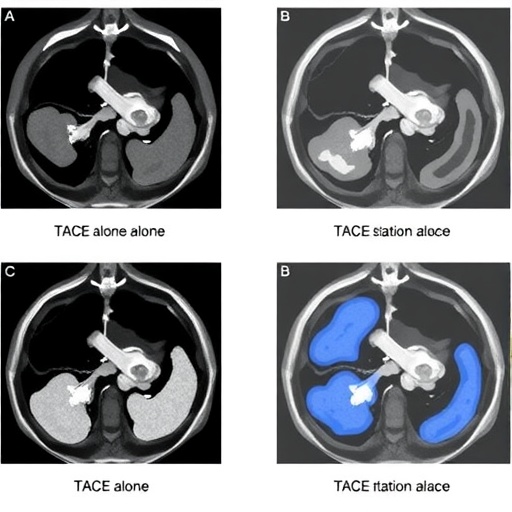PROTECT YOUR DNA WITH QUANTUM TECHNOLOGY
Orgo-Life the new way to the future Advertising by AdpathwayThe advancements in molecular biology and genomics have unearthed the extraordinary complexity of the mammalian genome and its transcriptional landscape. Unlike previously held beliefs, a significant portion of this genome is transcribed into various types of RNA, most notably noncapped RNAs, also referred to as napRNAs. These enigmatic molecules pose not just a challenge but also a tantalizing opportunity for researchers seeking to unravel their multifaceted roles in cellular processes and genetic regulation. The noncapped RNA molecules arise as fundamental players in the intricate web of gene expression and regulation, influencing numerous biological functions, signaling pathways, and cellular responses.
Traditional RNA sequencing techniques have primarily focused on capturing mRNA molecules, which bear a recognizable 5′ cap structure, facilitating their identification and quantification. However, the fact that napRNAs lack this distinguished terminal modification has rendered their study elusive and complex. These RNAs vary significantly in size, structure, and chemical modifications, meaning that discrepancies in their lengths and the nature of the modifications pose formidable hurdles to their investigation. As a result, the scientific community has long felt the need for an innovative approach capable of addressing these challenges systematically.
Recognizing this gap, a pioneering research team developed a novel sequencing method known as NAP-seq. This cutting-edge technique is specifically tailored for the comprehensive identification of full-length napRNA sequences, boasting an impressive single-nucleotide resolution method. This advancement shines a spotlight on the previously underappreciated landscape of noncoding RNAs, providing a versatile tool to discover these elusive molecules that play pivotal roles in gene expression regulation and cellular dynamics.
The experimental design principles of NAP-seq are meticulously crafted to maximize efficiency and accuracy in RNA detection. The initial step involves T4 polynucleotide kinase pretreatment, effectively standardizing RNA termini. This crucial step sets the stage for the comprehensive capture of a range of modified napRNAs, thus ensuring that researchers can identify not only simple napRNAs but also intricately modified versions. Failing to regulate terminal structures often leads to substantial bias in RNA representation, but this approach adeptly minimizes such risks.
Moreover, the NAP-seq methodology incorporates a size-selection process that synergizes with the depletion of high-abundance known RNAs through RNase H treatment. This dual approach enriches the long and low-abundance RNAs crucial for understanding the full spectrum of napRNAs. By overcoming the bottleneck of background signal contributed by prevalent RNA species, NAP-seq empowers researchers to delve deeper into the world of noncapped RNAs, offering promise for discovering novel transcripts.
A significant aspect of NAP-seq lies in its custom-designed adapters, which incorporate random barcodes. This thoughtful design element allows scientists to maintain traceability and identification of full-length napRNA molecules without introducing biases associated with PCR amplification or adapter ligation. To achieve high fidelity in cDNA synthesis, NAP-seq employs thermally stable reverse transcriptase enzymes combined with nested reverse transcriptase primers. This combination is pivotal for ensuring that cDNA synthesis can occur smoothly across RNA regions that may be structured or modified, drastically reducing the possibility of mispriming artifacts that often plague RNA sequencing endeavors.
As with any robust sequencing technique, comprehensive and parallel sequencing is essential to optimally measure the complexity of the RNA landscape. NAP-seq employs both Oxford Nanopore (long-read) and Illumina (short-read) platforms to capitalize on the unique advantages of third-generation and next-generation sequencing technologies. This synergistic approach allows researchers to achieve a comprehensive view of RNA populations, providing a reliable means of capturing the nuance and variability inherent in noncapped RNAs.
The practicality of the NAP-seq protocol is yet another strongly favorable aspect, as the entire procedure – from library preparation to deep sequencing and subsequent computational analysis – can be completed in just under a week. This expedited timeline is crucial for researchers eager to explore the intricacies of napRNAs across different cell types and tissues, paving the way for a broad array of investigations into noncoding RNA functionality.
The implications of employing NAP-seq extend far beyond the mere identification of new noncoding RNA classes. The advent of this technique also offers a potent avenue for probing the RNA biogenesis pathways that contribute to cellular regulation in various environments. With applications in diverse fields such as developmental biology, disease pathology, and therapeutic development, NAP-seq stands to revolutionize the exploration of RNA functions and regulatory mechanisms across the biological spectrum.
By providing tools to investigate the RNA landscape from a more granular perspective, NAP-seq is set to foster innovations in our understanding of gene expression. The challenges posed by the complex nature of noncapped RNAs have previously limited scientific progress in several domains. Still, with methodologies like NAP-seq, the potential for groundbreaking discoveries burgeons, giving researchers the power to decipher the regulatory networks that govern vital biological functions.
The newfound capabilities afforded by NAP-seq not only contribute to immediate research goals but also inspire future studies that may delve into the evolutionary significance of noncapped RNAs. These transcripts may reveal evolutionary adaptations and mechanisms, indicating how organisms respond to environmental pressures or evolutionary constraints. Understanding these dimensions could reshape our perspectives on genetics and complex traits.
The research community is abuzz with anticipation regarding the potential heights that NAP-seq could reach in terms of scientific inquiry. As labs worldwide begin to implement this methodology, collaborative studies and cross-disciplinary projects are likely to surface, ushering in a new era of RNA-centric research capable of bridging gaps across genetics, molecular biology, and systems biology. The implications for therapeutic strategies rooted in the manipulation of RNA pathways could hold the potential to tackle a variety of diseases, from genetic disorders to cancers, certainly indicating that we are only scratching the surface of what the world of noncapped RNAs can achieve.
Collectively, the developments surrounding NAP-seq underscore the exciting trajectory of molecular research, reinforcing the need for innovative methods to explore the full spectrum of RNA dynamics. The journey to unearthing the mysteries held within the genomic sequences of noncapped RNAs has only just begun, promising to significantly enrich our comprehension of gene regulation and its broader implications for health and disease.
As researchers mobilize around this new protocol, the pursuit of understanding napRNAs can lead to transformative breakthroughs, propelling forward our quest to decipher the complexities of life through the lens of molecular biology. The unfolding narrative surrounding noncapped RNAs is sure to captivate the scientific community for years to come, reinforcing the notion that the universe of RNA is as vast as it is vital.
Subject of Research: Noncapped RNA sequencing
Article Title: NAP-seq for full-length noncapped RNA sequencing
Article References:
Liu, S., Huang, J., Qu, L. et al. NAP-seq for full-length noncapped RNA sequencing.
Nat Protoc (2025). https://doi.org/10.1038/s41596-025-01261-6
Image Credits: AI Generated
DOI: 10.1038/s41596-025-01261-6
Keywords: noncapped RNA, sequencing, NAP-seq, transcriptomics, gene regulation, molecular biology
Tags: cellular signaling pathwaysfull-length RNA sequencinggene expression regulationinnovative genomics techniquesmammalian genome complexitymolecular biology advancementsNAP-seq technologynapRNAs biological functionsnoncapped RNA moleculesresearch breakthroughs in RNARNA sequencing challengesRNA transcriptional landscape


 18 hours ago
20
18 hours ago
20





















 English (US) ·
English (US) ·  French (CA) ·
French (CA) ·